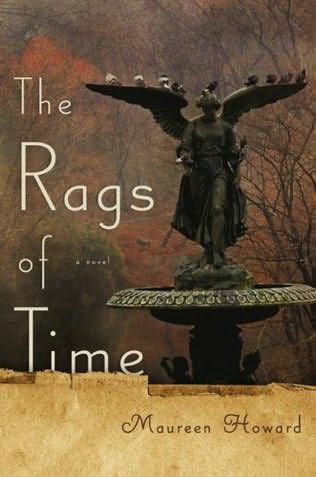
If you’re an impatient person, Advance Uncorrected Proofs are perfect, because they're very readable, even though they’re rather poor-quality trade paperbacks, with big tacky NOT FOR SALE signs and marketing information printed on the covers. I’ve collected Advance Uncorrected Proofs for a long time. It started when I was a book reviewer and the book editors sometimes forgot to replace my Advance Uncorrected Proofs with the published books. I was relaxed about it. They had a lot to do and I didn’t want to bother them. You had to be nice. You had to work.
Then I went through a phase where I ordered everything in advance on the internet because Uncorrected Proofs were for sale (and I didn’t have to review them, either). Thus I got the advance proof of Will Self’s apocalyptical novel, The Book of Dave, and Margaret Drabble’s The Sea Lady.
But this year - they’re just not for sale. The rebels with the proofs are discreet. I recently did manage to find the uncorrected proofs of The Rags of Time by the award-winning Maureen Howard (an American diva), one of my favorite writers. It’s the final volume of her “Four Seasons” quartet: the others are A Lover’s Almanac, Big as Life, and The Silver Screen. If you’re not familiar with her work, you should read her: she’s a female Joyce/Updike - is that an exaggeration? She won the National Book critics Circle Award for her 1978 memoir, Facts of Life, and has been nominated repeatedly for the PEN/Faulkner fiction award.
The Rags of Time (Autumn) splendidly interweaves the story of an aging writer with her fictional characters, people we met in Howard's previous books in the quartet. It’s a bit hard to keep up if you don’t remember them, so I would suggest reading the other books first: I had to skim parts of the previous three before I felt confident. Her style is much, much more elliptical than Anthony Powell’s in A Dance to the Music of Time, so it is a bit of work. She’s very lyrical - usually accessible, sometimes less so - and much more ambitious than most contemporary writers. Howard has a very visual imagination and her books are also illustrated with photos and drawings.
In Howard's new novel, reality and fiction are filtered through the consciousness of the novelist, an invalid who wears a floppy black coat and jeans shredded at the cuffs in the autumn as she shuffles on her walk around Central Park, and begins by recalling the “performative" ‘60s, her anti-war protests against Viet Nam and Cambodia - and correlates the time with the current war - but she is now unable to march. As she walks and later at home, she imagines the present of her fictional characters from past books (the other books of the quartet).
Among the writer's characters are Arnie, a young mathematician, struggling to solve problems and musing about his family life while waiting to testify in court on behalf of a boyhood friend who has broken financial laws. Louise, Arnie's wife, an artist, now devotes most of her anxious days to caring for her children. She copies the names of casualites of the Iraq war into an old baby book, saying it's art, a personal way of remembering, completely different from printing out their names from the internet.
There is also Sylvie, a refugee from Innsbruck in WWII, who was raped by Nazis and traumatized before she and her mother, Inga, moved to NY. Inga, a realist who quickly recovered, immediately found boyfriends, flirted with Hollywood, and soon married a rich man in Texas. Sylvie worked as a translator for the UN; eventually she recovered from her fear of men and married a well-to-do man with children; and then had an affair with Cyril, the grandfather of Arnie.
One is not supposed to quote from uncorrected proofs - says so right on the cover! - but why not break the rules? This is the internet!

Here is an excerpt about Sylvie. This passage is illustrated with a woodcut by Durer.
“Still the Federal house is not her home; and the broad stucco villa on Lundstrasse is not home, though she can tour every room with portraits of of ancestors, all men with trim whiskers, several with military honors of the Austro-Hungarian Empire. The Durer woodcuts were hung between mirrors in the dining room. So predictable, Inga said to her friends in New York, and so dreary.... Well, Inga would rather not partake of Melancholia with her schnitzel, Danke schon, and one day said as much to her husband.... The famous etching of that brooding angel with her mystical apparatus and a sleeping dog at her feet remained in its place.”
Howard writes beautifully - I'm savoring this novel.
PROOFS I SEARCHED FOR EARLIER THIS YEAR AND FAILED TO FIND :
Margaret Drabble’s The Pattern in the Carpet, her elegant memoir/history of jigsaw puzzles. I ended up buying the hardcover from the UK last spring. It’s a beautiful book and no regrets. But I looked for it every time I went online for months. I was VERY disappointed I couldn't get it in advance.
No comments:
Post a Comment